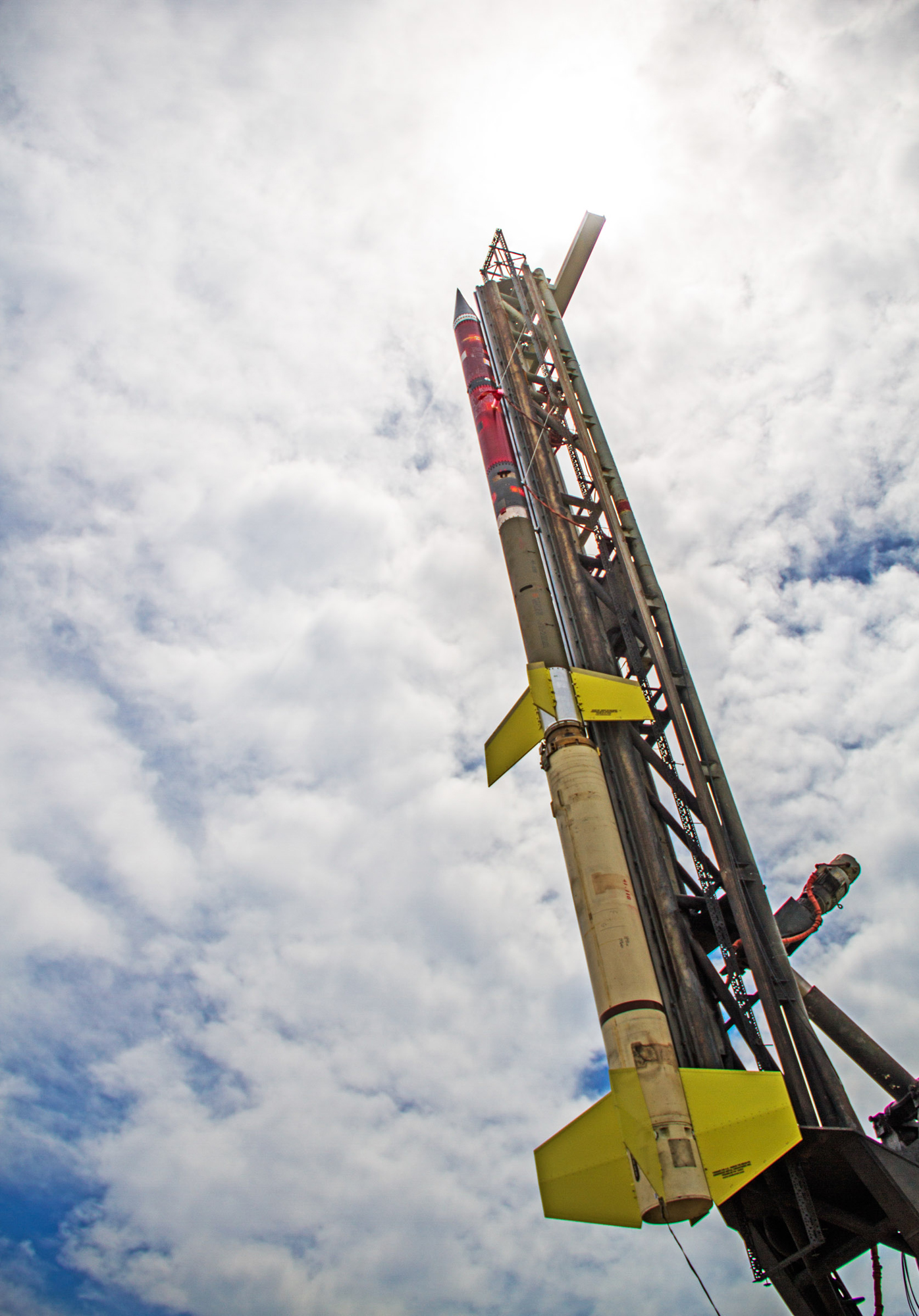Watch NASA launch a small rocket with dozens of student experiments today!
The two-hour launch window opens at 8 a.m. EDT (1200 GMT).
Update for 8:27 am ET: NASA's sounding rocket launch is now targeting an 8:32 am ET launch.
NASA will launch dozens of student experiments to space on a sounding rocket today (June 25), and you can watch it live here.
After a 24-hour weather delay, the Terrier-Improved Orion suborbital sounding rocket is now scheduled to lift off from NASA's Wallops Flight Facility in Wallops Island, Virginia, today between 8 a.m. and 10 a.m. EDT (1200-1400 GMT). Watch it live in the window above, courtesy of NASA, or tune in via the Wallops YouTube channel. The live broadcast begins at 7:40 a.m. EDT (1140 GMT).
Flying on this mission will be more than 70 different experiments built by university students as well as middle and high school students — all of whom had to build their experiments in isolation, working together virtually amid the ongoing coronavirus pandemic.
"Despite the challenges that dealing with COVID-19 presented, everyone came together to make this launch happen this year after having to postpone the project in 2020," Giovanni Rosanova, chief of the NASA Sounding Rockets Program Office at Wallops, said in a statement.
Related: July Fourth comes early: NASA sounding rocket releases colorful morning cloud show (photos, video)

"Typically, students from across the country descend upon Wallops days before launch to learn about rocketry and building experiments for spaceflight through the week-long RockOn! workshop," Chris Koehler, director of the Colorado Space Grant Consortium, said in the same statement. "This year to maintain social distancing due to COVID-19, the workshop was conducted virtually."
Get the Space.com Newsletter
Breaking space news, the latest updates on rocket launches, skywatching events and more!

The students built their experiments via the national student rocketry programs RockOn and RockSat-C, both run by the Colorado Space Grant Consortium in partnership with NASA Wallops.
Despite the pandemic, the student rocketeers were able to successfully construct more scientific payloads than ever before — so many that they would not all fit on one rocket, NASA said. So, 34 of the experiments are instead going to fly on a high-altitude balloon mission from Ft. Sumner, New Mexico, later this year.
The student experiments are designed to measure things like telemetry and environmental conditions, such as temperature, humidity, pressure and radiation. This year's batch of student payloads includes 32 experiments from the RockOn Program, eight from RockSat-C and more than 60 small cubesats built by middle and high school students as part of a program called "Cubes in Space."
NASA's Terrier-Improved Orion is a small, two-stage rocket that combines a Terrier first-stage booster with an Orion upper stage. The 36-foot-tall (11 meters) rocket will carry the experiments to an altitude of about 73 miles (117 kilometers), after which they will parachute back down to Earth above the Atlantic Ocean, where a boat is awaiting the payloads' return. Once the experiments are recovered, they will be returned to the student investigators for analysis.
Follow us on Twitter @Spacedotcom and on Facebook.
Join our Space Forums to keep talking space on the latest missions, night sky and more! And if you have a news tip, correction or comment, let us know at: community@space.com.

Hanneke Weitering is a multimedia journalist in the Pacific Northwest reporting on the future of aviation at FutureFlight.aero and Aviation International News and was previously the Editor for Spaceflight and Astronomy news here at Space.com. As an editor with over 10 years of experience in science journalism she has previously written for Scholastic Classroom Magazines, MedPage Today and The Joint Institute for Computational Sciences at Oak Ridge National Laboratory. After studying physics at the University of Tennessee in her hometown of Knoxville, she earned her graduate degree in Science, Health and Environmental Reporting (SHERP) from New York University. Hanneke joined the Space.com team in 2016 as a staff writer and producer, covering topics including spaceflight and astronomy. She currently lives in Seattle, home of the Space Needle, with her cat and two snakes. In her spare time, Hanneke enjoys exploring the Rocky Mountains, basking in nature and looking for dark skies to gaze at the cosmos.









